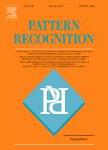版权所有:内蒙古大学图书馆 技术提供:维普资讯• 智图
内蒙古自治区呼和浩特市赛罕区大学西街235号 邮编: 010021

作者机构:Univ W England Bristol Inst Technol Bristol BS16 1QY Avon England
出 版 物:《PATTERN RECOGNITION》 (图形识别)
年 卷 期:2010年第43卷第2期
页 面:519-529页
核心收录:
学科分类:0808[工学-电气工程] 08[工学] 0812[工学-计算机科学与技术(可授工学、理学学位)]
基 金:European Commission [STRP016429]
主 题:Interactive evolution Texture-based segmentation Evolutionary algorithm
摘 要:Creating successful machine vision systems often begins a process of developing customised reliable image segmentation algorithms for the detection, and possibly categorisation of regions of interest within images. This can require significant investment of time from both the image processing and the domain experts to set up. Frequently this process is mediated via interviews, or language-based systems which may not fully capture the visual decision-making process of the domain experts. The resulting algorithms can also often be brittle in the sense of being highly specialised to the task for which they are tuned, and are consequently sensitive to changes in operating conditions or image specifications. One approach is to use interactive evolution for developing rapidly reconfigurable systems in which the users tacit knowledge and requirements can be elicited and used for finding the appropriate parameters to achieve the required segmentation without any need for specialised knowledge of the underlying machine vision systems. This paper presents an interactive tool that can be used to quickly and easily evolve optimal image segmentation parameters from scratch. Building on previous work, the new algorithm reported here incorporates user-guided local search and makes the fitness function more flexible to facilitate the underlying multi-objective decision-making process. One of the key requirements for any interactive system is a high level of usability, both in terms of effectiveness-being able to build accurate models that meet end-user requirements-and efficiency-being able to achieve the required results within a minimal amount of time and undue effort. The system described in this paper has been designed with these considerations in mind to ensure a high level of user-experience of the interaction process. We present results from a series of experiments with a range of users to analyse the effect of the improvements that have been made over the previous system